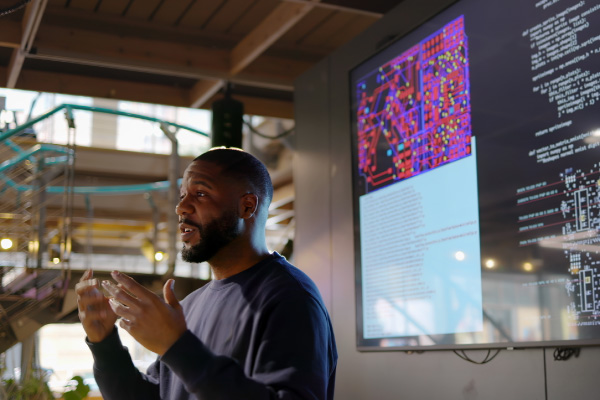How AI is Reshaping Higher Education
Artificial intelligence (AI) in higher education is rapidly transforming the landscape, reshaping how colleges and universities approach both teaching and administration. From AI-powered tutoring tools to predictive analytics in enrollment management, institutions are increasingly turning to technology to enhance efficiency, personalize learning, and streamline operations.
As AI tools like ChatGPT, learning management systems, and administrative automation become more widespread, higher education professionals face new opportunities—and new challenges. How is AI changing the role of educators? What does it mean for academic integrity, student support, or campus operations?
This article explores the growing influence of AI in higher education, highlighting the ways it is redefining classrooms, improving administrative processes, and prompting critical conversations about ethics, equity, and the future of academia. Whether you are a faculty member, administrator, or student, understanding the impact of artificial intelligence in higher education is essential for navigating the evolving educational landscape.
AI in the Classroom: Transforming Teaching & Learning
Artificial intelligence is revolutionizing the way instructors teach and students learn in higher education. One of the most significant changes is the rise of personalized learning platforms. Tools like Cognii, Carnegie Learning, and other adaptive systems use AI to assess a student’s progress in real-time and adjust content delivery to meet their unique needs. This personalized approach helps students stay engaged and supports those who may struggle with traditional teaching methods.
AI also saves faculty time by automating routine tasks. Grading software, especially for multiple-choice or short-answer assessments, can quickly evaluate student work, freeing instructors to focus on more meaningful feedback and course design. Writing tools powered by natural language processing can even offer students instant feedback on grammar, coherence, and structure, helping them improve before submitting final drafts.
Chatbots and virtual teaching assistants are enhancing access to support beyond the classroom. These tools can answer questions, explain concepts, or direct students to resources 24/7, helping bridge gaps in availability and reducing the burden on faculty and staff.
However, the integration of AI in teaching raises important concerns. Tools like ChatGPT have sparked debates around academic integrity, as students may misuse generative AI to complete assignments dishonestly. Additionally, over-reliance on automation could risk diminishing human connection and critical thinking in the learning process.
Despite these challenges, when used thoughtfully, AI can be a powerful complement to traditional instruction. It enables more inclusive, responsive, and flexible learning environments if educators are supported in integrating it ethically and effectively.
AI in Administration: Boosting Efficiency & Strategy
Beyond the classroom, artificial intelligence is transforming how colleges and universities operate behind the scenes. Administrative offices are increasingly using AI to streamline workflows, improve student services, and make data-driven decisions that enhance institutional outcomes.
In admissions and enrollment management, predictive analytics are helping institutions identify prospective students who are most likely to apply, enroll, and succeed. By analyzing application data, academic records, and even social media activity, AI tools can guide recruitment strategies, optimize financial aid packages, and forecast yield rates with greater accuracy. This allows colleges to be more strategic in their outreach while maintaining a competitive edge.
Student support services are also being reimagined through AI-powered chatbots and virtual assistants. These tools offer real-time answers to common questions about registration, financial aid, housing, and academic advising, improving accessibility and reducing response times. Some institutions are even using AI to monitor student engagement and academic performance, flagging those at risk of dropping out so that interventions can be deployed early.
Operational areas, such as scheduling, facilities management, and campus security, are also seeing gains. AI can optimize class schedules, predict maintenance needs, and even support emergency preparedness planning. These efficiencies not only save time and resources but can improve the overall student and staff experience.
However, the adoption of AI in administration is not without concerns. Algorithmic bias in admissions tools, data privacy risks, and the potential widening of equity gaps are serious issues. Institutions must be transparent about how AI is used and ensure that technological solutions do not unintentionally disadvantage underrepresented or marginalized populations.
When implemented thoughtfully, AI can help higher education institutions become more responsive, efficient, and student-centered, but oversight and accountability are key.
Ethical & Institutional Considerations
As artificial intelligence becomes more embedded in higher education, ethical concerns and institutional responsibilities are taking center stage. One major issue is faculty autonomy and job security. While AI can streamline tasks, there is growing concern that increased automation, especially in grading, advising, or curriculum design, could lead to reduced roles for instructors and staff or shift power away from educators towards tech-driven decision-making.
Data privacy is another pressing concern. AI systems rely on vast amounts of personal data to function effectively, raising questions about how student and faculty information is collected, stored, and used. Without robust privacy protections, institutions risk exposing sensitive data to misuse or breaches.
Additionally, algorithmic bias can lead to inequitable outcomes, particularly in admissions, advising, and predictive analytics. If AI models are trained on biased data, they can reinforce existing disparities rather than correct them.
To responsibly implement AI, institutions must establish clear policies, invest in digital literacy training, and include diverse stakeholders, especially faculty and students, in decision-making processes. Transparency, oversight, and a commitment to equity must guide how higher education leverages these powerful technologies.
The Future of AI in Higher Education
As artificial intelligence continues to evolve, its role in higher education is expected to grow, shaping everything from course delivery to campus operations. The most promising path forward lies in human-AI collaboration, where technology enhances rather than replaces the work of educators, advisors, and administrators. This means using AI to streamline tasks, support students more effectively, and free up time for more meaningful human interaction.
However, innovation must be balanced with ethical oversight and thoughtful policy development. Institutions that succeed will be those that prioritize transparency, equity, and stakeholder input as they integrate new tools. The role of AI in higher education involves more than just automation; it aims to foster more personalized, inclusive, and efficient learning environments. With the right guardrails, AI can help colleges and universities meet the evolving needs of students and society.
Check out Top Articles on HERC Jobs.
About the Author: Shelby Harris is a freelance writer and public sociologist. She holds a master’s degree in Sociology from East Carolina University.

